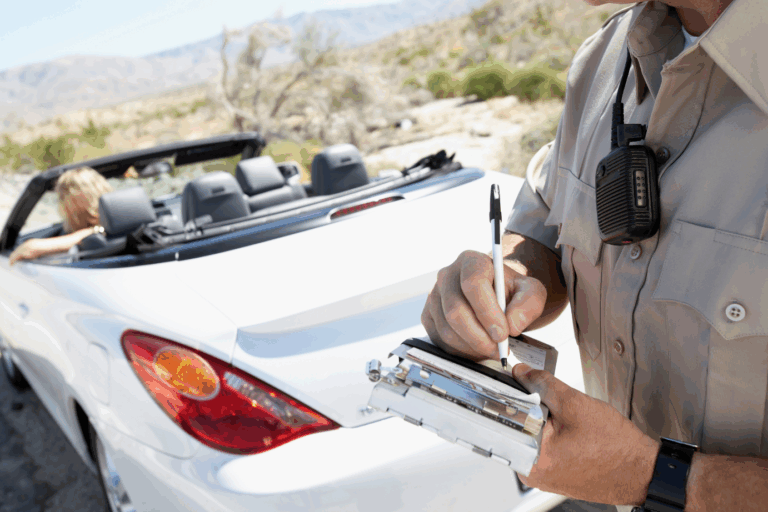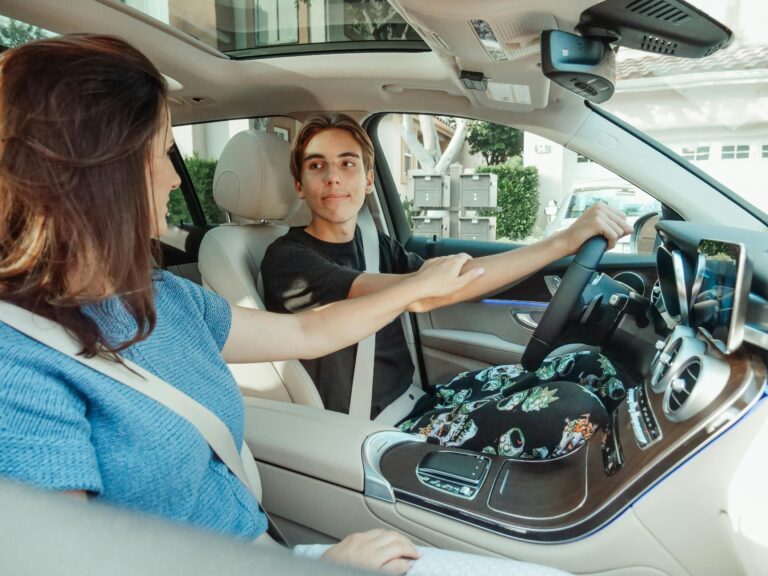
Dangers of Speeding
Teaching young and new drivers about the dangers of speeding can help reduce teen crashes. Educating students about the importance of safe driving habits is a valuable part of driving

Teaching drivers about road safety is key. Covering topics like drowsy driving, distracted driving, and driving while impaired are all important parts of teaching new drivers safe road habits. It’s equally important to talk about speeding and reckless driving to help them understand safe driving practices. In this blog, we’ve gathered some topics to discuss with drivers and offer additional hands-on learning tools to help drive home the message of safety over speed.
Use credible sources, like this CDC article on teen crashes or the National Highway Traffic Safety Administration, to discuss the relationship between speeding and aggressive driving. Share statistics around speeding-caused crashes; the NHTSA estimates that almost 1/3 of crashes in 2023 were caused or related to speeding, and the CDC states that car crashes are the leading cause of death for teens.
Discuss the relationship between speeding and aggressive driving, such as failing to allow proper following distance from the car ahead, failing to use turn signals, making unnecessary lane changes, failing to yield, and engaging in other dangerous behaviors. Talking with drivers about what constitutes aggressive driving can help them understand and avoid these risky behaviors. Programs like Reduce Teen Crashes by Fatal Vision help drivers understand how speeding and risky driving behaviors can be dangerous. Explore driving simulators like the Simulated Impaired Driving Experience (SIDNE) or Roadster Pedal Kart paired with Distracted & Drowsy Driving Goggles to provide a truly hands-on learning experience. These educational tools create a memorable learning environment that helps facilitate conversations around driving safety.
It’s important to cover what the term “road rage” means to ensure drivers know how to identify it. Talk with participants about what they perceive as road rage and come up with ideas on what may cause someone to act in this manner. Then, give alternative and healthier choices and de-escalation techniques to help drivers make the best choice possible if they find themselves in an uncomfortable situation.
When discussing speeding and reckless driving, talk with participants about the effects of road rage on themselves, other drivers around them, and how it can negatively impact their experiences on the road. Teach them skills on avoiding road rage themselves and talk about best practices if someone is driving dangerously around them. It’s best to let erratic cars pass freely and give them plenty of space on the road.
Especially with young or new drivers, talk about the impact of peer pressure or fitting in while operating a vehicle. The CDC states that the risk of car crashes increases with every teen or young adult passenger in the car. Discuss ways your participants can encourage safer driving behaviors, like how to avoid peer pressure to drive erratically or dangerously and reduce distractions while driving.
Discuss strategies to avoid road rage incidents with your drivers. Cover topics like following all road rules, using turn signals, driving in a predictable manner, reducing speed, and allowing cars that are driving erratically to pass without incident. Combining educational tools, like the Reduce Teen Crashes program, Distracted & Drowsy Goggle Kits, and Speeding Posters & Banners, with open discussion about the dangers of speeding helps drivers make safer choices. Hands-on learning supports better information retention and a positive, memorable experience around a serious topic.
Talking with participants about the dangers of speeding and reckless driving is an important conversation, and using these tools and resources can help you create a plan that will teach them safer driving habits. Be sure to incorporate hands-on learning and repeat the message by hanging banners or posters. Reach out to our team to request a quote for products that take your program to the next level.
Innocorp is the pioneering developer of Fatal Vision® Goggles and other experiential learning tools designed to educate on the dangers of impairment and promote risk prevention. Innocorp provides impactful, hands-on resources used globally by law enforcement, educators, and safety professionals to demonstrate the consequences of substance use, risky driving, and other dangerous behaviors.
We’d love to online chat! We are available Monday-Friday from 8am-5pm (CST):
Or schedule a time for a consultation:

Teaching young and new drivers about the dangers of speeding can help reduce teen crashes. Educating students about the importance of safe driving habits is a valuable part of driving

The dangers of speeding are important to discuss in a teen or student driver education program; here are a few tips on what and how to cover this topic.